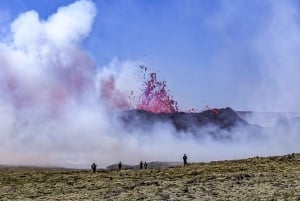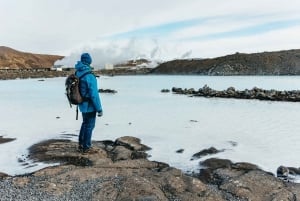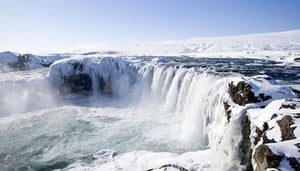Weather Overview
Iceland has a much milder climate than its name and location would imply. Although the country is very close to the Arctic Circle its climate is moderated by a branch of the Gulf Stream that flows along its south-west side. The warmer Atlantic air that is brought by the Gulf stream, does however, come in contact with colder Arctic air, resulting in frequent weather changes.
For this unique island in the middle of the Atlantic the main tourist season is from May through September. From May and until mid July Iceland has daylight for 24 hours a day. This means that around midnight you will see the sun gently set down at the horizon before it starts to rise again. Even though the sun never sets during this time it does not warm the air much and often the sky is cloudy or a slight overcast.
In high winter Iceland sees almost the opposite of its 24 hour daylight. The "shortest" day of the year is December 21st when Iceland only has around 4 hours of daylight. High winter often brings snowstorms and frost but the capital area usually has a milder weather than rest of the country.
Travelling to Iceland during summertime we suggest you bring a windbreaker, rainwear, pullover and good walking shoes (hiking shoes often come in handy).
For winter time it’s essential that you bring warm clothing such as a thick coat, mittens, warm hats etc. If you are in need of warm clothing in Reykjavík there is no need to worry. The locals have through the years developed clothing that fits their climate and can be found in local stores.
Reykjavík is located on Iceland's south-west corner, one of the warmest areas of the country, making it very unlikely that you will encounter heavy snow in the capital during winter. If you venture outside the capital and to other parts of the country or the highlands the snow will appear and often few feet deep.
 -5 °C
-5 °C
 overcast clouds
overcast clouds overcast clouds
overcast clouds light snow
light snow light snow
light snow light rain
light rain light snow
light snow overcast clouds
overcast clouds light snow
light snow light snow
light snow overcast clouds
overcast clouds overcast clouds
overcast clouds overcast clouds
overcast clouds overcast clouds
overcast clouds overcast clouds
overcast clouds overcast clouds
overcast clouds broken clouds
broken clouds scattered clouds
scattered clouds few clouds
few clouds few clouds
few clouds few clouds
few clouds scattered clouds
scattered clouds scattered clouds
scattered clouds scattered clouds
scattered clouds few clouds
few clouds clear sky
clear sky clear sky
clear sky clear sky
clear sky clear sky
clear sky clear sky
clear sky few clouds
few clouds few clouds
few clouds clear sky
clear sky clear sky
clear sky scattered clouds
scattered clouds broken clouds
broken clouds overcast clouds
overcast clouds













